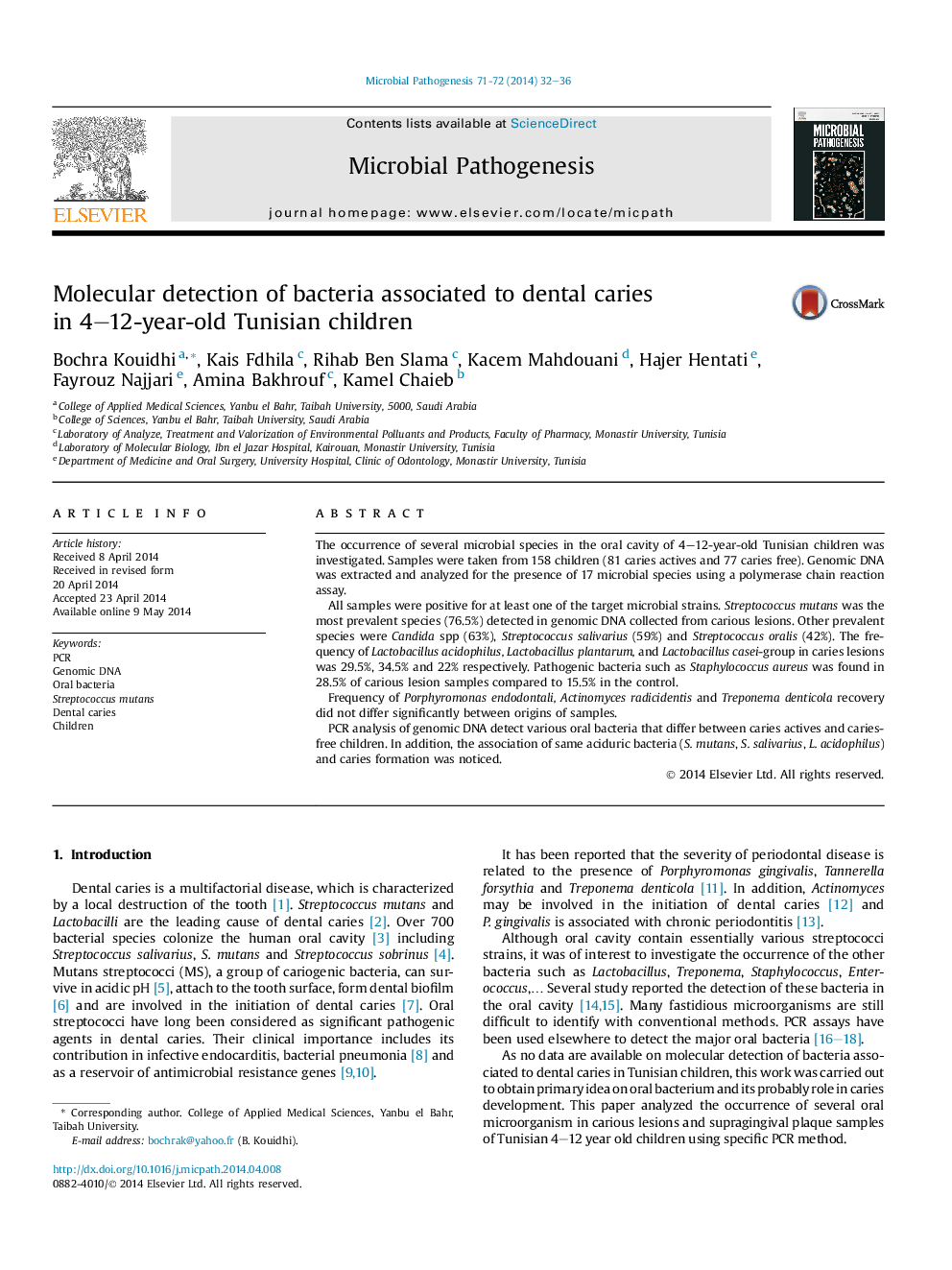| Article ID | Journal | Published Year | Pages | File Type |
|---|---|---|---|---|
| 3416577 | Microbial Pathogenesis | 2014 | 5 Pages |
•This is the first report on molecular identification of bacteria associated to dental caries in Tunisian children.•Variability in frequencies of some cariogenic bacteria and periodontal pathogens detected in the studied samples.•An association exist between the presence of acidogenic microflora and caries development.•Oral streptococci and Lactobacilli play a key role in dental caries.
The occurrence of several microbial species in the oral cavity of 4–12-year-old Tunisian children was investigated. Samples were taken from 158 children (81 caries actives and 77 caries free). Genomic DNA was extracted and analyzed for the presence of 17 microbial species using a polymerase chain reaction assay.All samples were positive for at least one of the target microbial strains. Streptococcus mutans was the most prevalent species (76.5%) detected in genomic DNA collected from carious lesions. Other prevalent species were Candida spp (63%), Streptococcus salivarius (59%) and Streptococcus oralis (42%). The frequency of Lactobacillus acidophilus, Lactobacillus plantarum, and Lactobacillus casei-group in caries lesions was 29.5%, 34.5% and 22% respectively. Pathogenic bacteria such as Staphylococcus aureus was found in 28.5% of carious lesion samples compared to 15.5% in the control.Frequency of Porphyromonas endodontali, Actinomyces radicidentis and Treponema denticola recovery did not differ significantly between origins of samples.PCR analysis of genomic DNA detect various oral bacteria that differ between caries actives and caries-free children. In addition, the association of same aciduric bacteria (S. mutans, S. salivarius, L. acidophilus) and caries formation was noticed.
